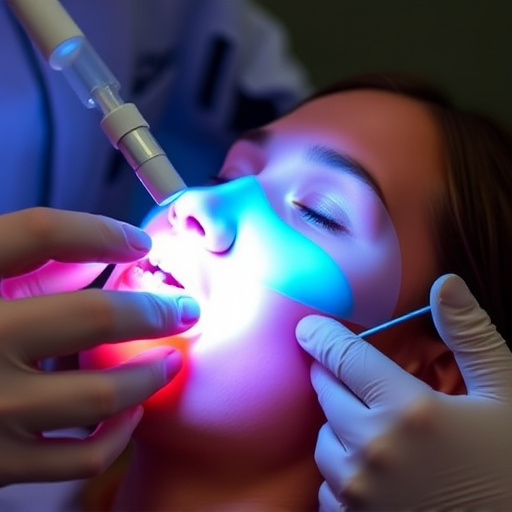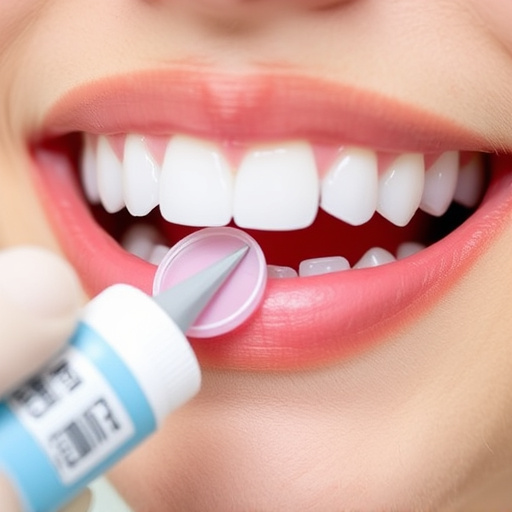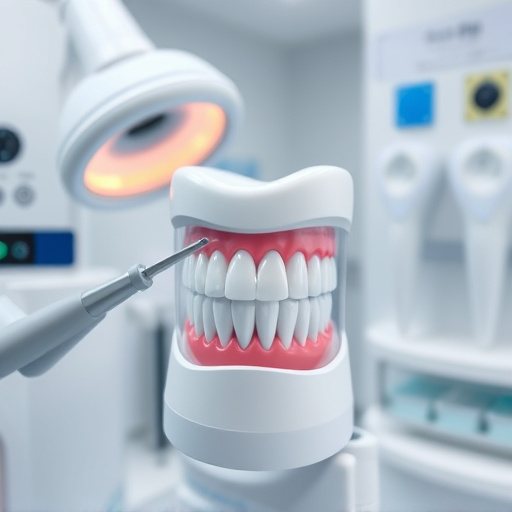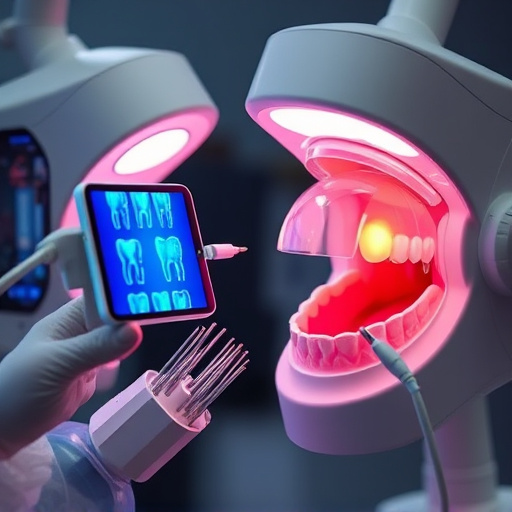TMJ disorder, caused by structural issues, grinding teeth, injuries, arthritis, or joint dislocation, requires early diagnosis and treatment to prevent jaw damage. Options range from stress management and jaw exercises to dental implants. Non-invasive treatments include physical therapy, oral splints, and targeted tooth procedures. Preventative care through regular cleanings, good posture, stress management, and custom mouthguards is crucial for managing TMJ disorder effectively.
Early detection and intervention are key to managing TMJ disorder (TMD) effectively, preventing severe jaw damage. This article explores the critical first steps in treating TMD, focusing on non-invasive options for early intervention. We delve into the causes and subtle symptoms, helping readers recognize potential issues. Additionally, we offer preventative measures to safeguard your jaw’s health long-term, emphasizing the importance of timely TMJ disorder treatment.
- Understanding TMJ Disorder: Causes and Early Symptoms
- Non-Invasive Treatment Options for Early Intervention
- Preventative Measures: Protecting Your Jaw's Health Long-Term
Understanding TMJ Disorder: Causes and Early Symptoms

TMJ disorder, affecting the temporomandibular joint (the connection between your jawbone and skull), can lead to severe damage if left untreated. Understanding its causes and early symptoms is vital for prompt TMJ disorder treatment. The condition often arises from a combination of factors including structural abnormalities in the jaw, tooth grinding or clenching, traumatic injuries, arthritis, or dislocation of the joint. Early signs may include clicking or popping sounds when opening or closing the mouth, facial pain, headaches, and difficulty chewing.
Timely intervention through appropriate TMJ disorder treatment can prevent these symptoms from escalating. Simple measures like stress management, jaw exercises, and physical therapy might be enough for mild cases. However, as the condition progresses, more advanced solutions such as dental implants or crowns may become necessary to restore jaw function and alleviate pain.
Non-Invasive Treatment Options for Early Intervention

Early detection is key when it comes to TMJ disorder treatment, as prompt action can prevent severe jaw damage and discomfort. Thankfully, there are several non-invasive treatment options available for those in the early stages of the condition. These include simple yet effective techniques like jaw exercises and physical therapy, which can help reduce inflammation and improve joint mobility. Oral splints or mouth guards are also commonly used to alleviate pressure on the temporomandibular joint (TMJ).
For more advanced cases, general dentistry procedures such as wisdom tooth removal or targeted tooth repair might be recommended. These procedures aim to address any underlying dental issues that contribute to TMJ disorder and provide long-lasting relief. With the right early intervention strategies, individuals can experience significant improvements in their jaw health and overall quality of life.
Preventative Measures: Protecting Your Jaw's Health Long-Term

Preventative care is key when it comes to TMJ disorder treatment, as early intervention can significantly reduce the risk of severe jaw damage over time. Simple yet effective strategies such as maintaining regular dental cleanings and check-ups allow for the early detection of any issues within the temporomandibular joint (TMJ). These routine visits not only keep your teeth clean but also provide an opportunity to assess overall oral health, including the condition of your TMJ.
In addition to regular dental care, certain lifestyle adjustments can further protect your jaw’s long-term health. This might include practicing good posture, reducing bite forces through stress management or ergonomic changes, and avoiding habits that strain the TMJ, such as chewing gum or clenching your teeth. In some cases, custom mouthguards may be recommended to prevent grinding during sleep, a common cause of TMJ disorder. Regular dental crowns or tooth repairs can also play a role in maintaining balance within the jaw joint if there is evidence of wear or damage.
Early detection and intervention are key to managing TMJ disorder. By recognizing subtle symptoms and opting for non-invasive treatment methods, individuals can prevent severe jaw damage and maintain optimal oral health. Implementing preventative measures, such as proper bite alignment and stress management, ensures long-term protection of the temporomandibular joint. Timely action with respect to TMJ disorder treatment not only alleviates discomfort but also safeguards the complex mechanics of the jaw, ensuring a more comfortable and functional life for those affected.














